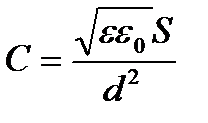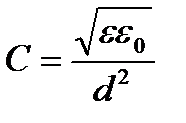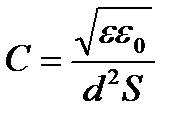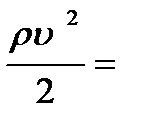Overall assessment of the knowledge 3 страница
203. Regularity of the rhythm on cardiogram is determined by the equality of intercyclic intervals: 1. P - Q 2. Q –T 3. S – T 4. P – P 5. R – R 204. Time intervals between the prongs of the same name of neighbouring cycles are called: 1. intervals; 2. segments; 3. amplitudes; 4. frequencies; 5. period. 205. Time of the excitation propagation in ventricles that is determined by the width of QRS complex is: 1. 0.06 – 0.1 sec; 2. 0.12 – 0.2 sec; 3. 0.7 – 0.9 sec; 4. 0.18 – 0.34 sec; 5. 0.9 – 1.2 sec. 206. Biopotential that is taken from the surface of a body in cardiography is measured in: 1. milliampere; 2. millivolt; 3. nanometer; 4. micrometer; 5. Farad. 207. Are in cardiogram: 1. prongs, segments, intervals; 2. segments, frequencies, prongs; 3. frequencies, intervals, frequencies; 4. membrane potential, interval; 5. intervals, frequencies, amplitudes. 208. The first standard lead corresponds to the placing of electrodes on: 1. right and left hands; 2. right hand and left leg; 3. left leg and left hand; 4. right leg and right hand; 5. right and left legs. 209. The second standard lead corresponds to the placing of electrodes on: 1. right and left hands; 2. right hand and left leg; 3. left leg and left hand; 4. right leg and right hand; 5. right and left legs. 210. The third standard lead corresponds to the placing of electrodes on: 1. right and left hands; 2. right hand and left leg; 3. left leg and left hand; 4. right leg and right hand; 5. right and left legs. 211. Ventricular complex on cardiogram includes prongs: 1. QRS 2. PRS 3. PQT 4. SRQ 5. SQR 212. Which of the intervals does have the longest duration (in sec): 1.PQ 2.QRS 3.RR 4. ST 5.QT 213. Heart biopotentials directly reflects the processes of excitation and conduction of impulses in: 1. myocardium 2. pericardium 3. neurolemma; 4. sarcolemma; 5. dendrite. 214. Registering and analysis of heart biopotentials is used in medicine in: 1. in diagnostical purposes at cardiovascular diseases; 2. in treatment methods at cardiovascular diseases; 3. in diagnostical purposes at neurological diseases; 4. in diagnostical methods for the determination of heart sizes; 5. in diagnostics of impedance of living tissue. 215. Electrocardiography is based on: 1. Einthoven theory that allows to evaluate the heart biopotentials; 2. Faraday theory; 3. Doppler phenomenon; 4. Peltier phenomenon; 5. Einstein theory. 216. ECG prongs are donoted in sequence: 1. P-Q-R-S-T-U; 2. U-P-R-S-T-Q; 3. U-Q-P-R-S-T; 4. P-Q-S-R-T-U; 5. P-Q-R-S-U-T. 217. At the pathological changes in heart is observed: 1. changing of the height and intervals of the ECG; 2. changing of the height of ECG prongs; 3. changing of the ECG intervals; 4. form of ECG doesn’t change; 5. absence of R-prong. 218. Standard bipolar leads for cardiograms registering were suggested by: 1. Goldman; 2. Einstein; 3. Poiseuille; 4. Einthoven; 5. Newton. 219. Sensors that under the influence of entering signal generate current or voltage: 1. active; 2. passive; 3. parametric; 4. strain gauges; 5. resistant. 220. Sensors in which under the influence of entering signal electric parameters are changed: 1. active; 2. passive; 3. parametric; 4. strain gauges; 5. resistant. 221. Parametric sensors: 1. photoelectric, piezoelectric; 2. capacitive, rheostat; 3. piezoelectric, photoelectric; 4. capacitive, photoelectric; 5. piezoelectric, rheostat. 222. Thermocouple is: 1. closed circuit of two different conductors or semiconductors; 2. closed circuit of two same conductors; 3. thermometer of resistance; 4. closed circuit of conductor and semiconductor; 5. closed circuit of two same semiconductors. 223. Input quantity of thermoelectric sensor: 1. pressure; 2. electromotive force; 3. resistance; 4. temperature; 5. potential. 224. Output quantity of thermistor: 1. temperature; 2. pressure; 3. resistance; 4. electric voltage; 5. electric current. 225. Devices that are based on dependence of substance resistance on temperature: 1. oscillograph; 2. thermoresistors; 3. thermistors; 4. electrodes; 5. piezo sensors. 226. Graduation of thermistor: 1. construct the graph of current dependence on temperature; 2. construct the graph of electromotive force dependence on temperature; 3. construct the graph of temperature coefficient dependence on resistance; 4. construct the graph of resistance dependence on temperature; 5. construct the graph of electrical resistivity dependence on temperature. 227. Thermistor is: 1. thin metal wire; 2. crystalline semiconductor; 3. ceramic element; 4. barometer; 5. piezo element. 228. If conduct the electric current through the juncture of semiconducting thermocouple then the juncture heats or cools. It is called: 1. Peltier effect; 2. Compton scattering; 3. photoelectrical effect; 4. piezoelectrical effect; 5. Doppler effect. 229. At graduating of thermistor the dependence of…on temperature is found: 1. current; 2. electromotive force; 3. induction; 4. resistance; 5. potential difference. 230. Transducer of electric quantities to non-electrical once: 1. sensors; 2. electrodes; 3. isolators; 4. semiconductors; 5. electrolytes. 231. Sensitivity of sensor: 1. Z=Dx/Dy 2. Z=y/x 3. Z=x/y 4. Z=Dy/Dx 5. Z=2x/y 232. Sensors the principle of work of which is based on the phenomenon of polarization of crystallic dielectrics at deformation: 1. rheostatic; 2. strain gauge; 3. inductive; 4. piezoelectrical; 5. active. 233. In crystalline dielectrics polarization can emerge at the absence of electric field at deformation: 1. piezoeffect; 2. Peltier effect; 3. thermoelectronic emission; 4. photoeffect; 5. Compton effect. 234. Phenomena that are used in vacuum photoelements: 1. internal photoeffect; 2. external photoeffect; 3. thermoelectronic emission; 4. photogalvanic element; 5. galvanization. 235. Electronic amplifiers are purposed for: 1. transformation of nonelectric input quantity to an electric signal; 2. transformation of alternating current to direct one; 3. increasing the electric signal; 4. increasing the frequency of alternating current; 5. increasing the circular frequency. 236. Graduation of thermocouple: 1. construct the graph of current dependence on temperature; 2. construct the graph of electromotive force dependence on temperature; 3. construct the graph of resistance dependence on temperature; 4. construct the graph of temperature coefficient dependence on resistance; 5. construct the graph of electrical resistivity dependence on temperature. 237. At the increasing of temperature the resistance of semiconductors: 1. decreases exponentially; 2. doesn’t change; 3. increases exponentially; 4. increases linearly; 5. decreases linearly. 238. Sensors in which the active resistance at their mechanical deformation changes: 1. rheostatic; 2. strain gauge; 3. inductive; 4. piezoelectrical; 5. active. 239. Parametric sensors are devices in which…changes: 1. current; 2. voltage; 3. R, L, C; 4. impedance; 5. temperature. 240. At increasing the temperature electrical resistance of metal conductors (U-voltage, I-current): 1. doesn’t change; 2. decreases; 3. increases; 4. is determined by formula R=U/I; 5. takes the maximal value 1 Ω. 241. Ultrasound sensor that allows to obtain the pictures of internal organs in ultrasound dignostics is: 1. thermal sensor; 2. piezosensor; 3. capacitance sensor; 4. optic sensor; 5. strain gauge. 242. Formula means:
1. frequency characteristic of an amplifier; 2. amplitude characteristic; 3. Boltzmann distribution; 4. amplifier coefficient; 5. current resonance. 243. Active (generator) sensors: 1. piezoelectrical, strain gauge type sensors; 2. piezoelectrical, photoelectrical; 3. capacitive, photoelectrical; 4. capacitive, rheostatic; 5. rheostatic, photoelectrical. 244. Conductors with special shape that connect a biological system with measuring circuit: 1. electrodes; 2. sensors; 3. capacitors; 4. amplifiers; 5. resistors. 245. Measuring device for the visual observing of functional dependence of quantities that were transformed to electric signal: 1. optical quantum generator; 2. oscillograph; 3. tomograph; 4. thermovisor; 5. electronic microscope. 246. Oscillograph is measuring device for: 1. visual observing or recording the functional dependence of two quantities; 2. transforming to electrical signal; 3. recording the functional dependence of two quantities; 6 вариантов 4. visual observing of one quantity changing; 5. recording of one quantity changing; 6. changing and observing the functional dependence of many quantities. 247. Influence of factors on thermoelectromotive force of a thermocouple: 1. properties of elements that are in thermoelement and temperature difference of junctures; 2. galvanometer sensitivity; 3. scheme of thermoelements connection; 4. thermal current; 5. scheme of galvanometer switching. 248. Resistance of a conductor depends on: 1. only its size; 2. only its shape; 3. only the material the conductor was made of; 4. only its length; 5. its cross section, length and material the conductor was made of. 249. Contact potential difference: 1. dU=IR 2. U=(kT/e) ln(n1/n2) 3. dU=TdS-PdV 4. U1, 2=(U1-U2)=dU 5. U=I(R+r) 250. Methods of phonocardiography, rheography, sphygmography, electromanometry and ballistocardiography are: 1. electrical registering of nonelectrical quantities; 2. registering of biopotentials of different organs; 3. registering of electrical quantities; 4. registering of impulse tones; 5. registering of noises in heart. 251. Darsonvalization is: 1. influence on the skin and available mucosas with weak high-frequency discharge; 2. warm released at the passing of high-frequency current in tissues of organism; 3. influence on tissues with waves of centimeter diapason; 4. influence with alternating electric field; 5. influence on tissues of organism with high-frequency magnetic field. 252. Diathermy is: 1. influence on the skin and available mucosas with weak high-frequency discharge; 2. warm released at the passing of high-frequency current in tissues of organism; 3. influence on tissues with waves of centimeter diapason; 4. influence with alternating electric field; 5. influence on tissues of organism with high-frequency magnetic field. 253. UHF-therapy is: 1. influence on the skin and available mucosas with weak high-frequency discharge; 2. warm released at the passing of high-frequency current in tissues of organism; 3. influence on tissues with waves of centimeter diapason; 4. influence on tissues of organism with high-frequency alternating elecric field; 5. influence on tissues of organism with high-frequency magnetic field. 254. Frequency of oscillation used for UHF-therapy: 1. 30,2 MHz; 2. 20 kHz; 3. 1000 Hz; 4. 40,58 MHz; 5. 40 kHz; 255. Inductothermy: 1. influence on the skin and available mucosas with weak high-frequency discharge; 2. warm released at the passing of high-frequency current in tissues of organism; 3. influence on tissues with waves of centimeter diapason; 4. influence with alternating electric field; 5. influence on tissues of organism with high-frequency magnetic field. 256. UHF-therapy is the influence on organs and tissues with: 1. alternating electric field with frequency (30 mHz-300 mHz); 2. alternating electromagnetic field with frequency (30 mHz-100 mHz); 3. alternating magnetic field with frequency (30 mHz-100 mHz); 4. alternating current with frequency (30 mHz-100 mHz); 5. alternating magnetic field with frequency (30 mHz-300 mHz). 257. UHF-field in organism causes: 1. heat effect; 2. stimulating effect; 3. anaesthetic effect; 4. shock effect; 5. mild irritant effect. 258. Intensiveness of UHF-field: 1. increases with distancing from the source of the field; 2. doesn’t change with distancing from the source of the field; 3. decreases with distancing from the source of the field; 4. doesn’t depend on the distance from source of the field to measurement place; 5. depends on direction of distancing from field source; it increases with distancing to one side and decreases with distancing to opposite side. 259. At influence of UHF-field to an electrolyte and dielectric that are in the same conditions: 1. temperature of electrolyte increases faster than temperature of dielectric at this frequency; 2. temperature changes the same way in electrolyte and dielectric; 3. temperature doesn’t change in electrolyte and dielectric; 4. temperature of dielectric increases faster than temperature of electrolyte; 5. temperature of dielectric increases and in electrolyte it doesn’t change. 260. At UHF-therapy influences on a patient: 1. alternating electric field with high frequency; 2. alternating magnetic field with high frequency; 3. direct electric current; 4. alternating electric current; 5. alternating magnetic field with low frequency. 261. Formula of Формула количества теплоты, выделяемая в диэлектрике при воздействии УВЧ (где r - удельное сопротивление) 1.Q=E2/r; 2.Q=wE2etgd; 3.Q=wE2ee0tgd; 4.Q=kI2RT; 5.Q= kU2/RT. 262. Heat released in electrolytes that are in electric field of UHF: 1. q = wE2tgd/ee0 2. q=E2/p 3. q=pE2 4. q=wE2ee0tgb 5. q=uE2 263. Formula for heat released in living tissue at the influence of UHF (where r-electrical resistivity): 1. Q = E2r; 2. Q = wE2ee0tgd; 3. Q = E2/r+w E2ee0tgd; 4. Q = kl2RT; 5. Q=kU/Rt. 264. Therapeutic contour in UHF-apparatus are purposed for: 1. amplification of biopotentials; 2. providing the electromagnetic oscillations; 3. generation of electromagnetic oscillations; 4. taking of potential difference between two point on body surface; 5. providing the safety of a patient. 265. Thomson formula: 1. 2. 3. 4. 5. 266. Capacitance of the plane condenser: 1.
4.
267. Alternating capacitance condenser in therapeutic contour of UHF-apparatus are purposed for changing the: 1. oscillations frequency of anode oscillatory circuit; 2. amplitude frequency in anode oscillatory circuit; 3. natural oscillation frequency of therapeutic contour; 4. impedance of therapeutic contour; 5. intensiveness of anode current in oscillatory circuit. 268. Method of influence of ultra high frequency electric field on human organism: 1. SHF-frequency; 2. microwave therapy; 3. UHF-frequency; 4. general darsonvalization; 5. aeroinotherapy. 269. UHF-apparatus is: 1. enhancer of the signal with registering device; 2. push-pull vacuum tube oscillator with therapeutic contour; 3. rectifier of alternating current with electrodes; 4. therapeutic contour with patient’s electrodes; 5. triode vacuum tube oscillator. 270. Physical factors that effect on the organism tissues at UHF-therapy: 1. alternating magnetic field; 2. alternating electric field with high frequency; 3. direct electric field; 4. ultrasound; 5. X-ray radiation. 271. Method of the medicament introduction to an organism using the direct current without injection: 1. electrocoagulation; 2. electrophoresis; 3. electrostimulation; 4. inductothermy; 5. darsonvalization. 272. Method of influence of high-frequency magnetic field on human organism: 1. UHF-therapy; 2. SHF-therapy; 3. diathermy; 4. electrosurgery; 5. inductothermy. 273. Method of influence of continuous direct magnetic field on human organism: 1. magnitotherapy; 2. inductothermy; 3. diathermy; 4. electrophoresis; 5. galvanization. 274. Therapeutic method in which is used Joule heat released at the passing of high-frequency current along the tissues of an organism: 1. darsonvalization; 2. diathermy; 3. diathermocoagulation; 4. inductothermy; 5. aeroionotherapy. 275. At the influence of electric field of UHF on human organism: 1. ions polarization arises; 2. molecules ionization arises; 3. conduction currents arises; 4. displacement currents arises; 5. conduction and displacement currents arises. 276. Method of using the weak high-frequency electric charge that is formed between the body surface and special electrode: 1. darsonvalization; 2. diathermy; 3. diathermocoagulation; 4. inductothermy; 5. aeroionotherapy. 277. At the passing of high-frequency current along the tissues of an oraganism Joule heat is released. It destroys tissues: 1. UHF-therapy; 2. SHF-therapy; 3. decometer-wave therapy; 4. electrosurgery; 5. inductothermy. 278. Treatment method at which action of low power direct current on tissues of organism is used: 1. darsonvalization; 2. electrostimulation; 3. faradization; 4. electrocoagulation; 5. galvanization. 279. Influence of short time current with high value on human heart: 1. franklinization; 2. defibrillation; 3. darsonvalization; 4. faradization; 5. galvanization. 280. Under the action of high-frequency electric field pereorientation of dipole molecules occurs in dielectric: 1. conduction current arises; 2. displacement current arises; 3. galvanization arises; 4. ionic diffusion arises; 5. electric dipole arises. 281. Physiological influence of UHF-field: 1. action of electric field on molecules and ions in tissues of organism; 2. transfer of impulse to molecules of tissues of an organism; 3. arising of impulse current in tissues of an organism; 4. transfer of electromagnetic field to tissues of an organism; 5. decreasing the ions concentration in human tissues. 282. Purpose of therapeutic contour in the UHF-apparatus: 1. providing the safety of medical staff; 2. providing the safety of a patient; 3. frequencies of therapeutic contour and apparatus are not coincided; 4. strengthening of action to a patient; 5. decreasing the current. 283. Methods based on primary action of direct current with low power on tissues of organism: 1. electrostimulation; 2. brush discharge; 3. galvanization and electrophoresis; 4. diathermy. 5. electric sleep. 284. Usage of galvanization: 1. for electrostimulation of tissues; 2. for heating of tissues; 3. for medicinal electrophoresis; 4. for studying the heat influence of current on tissues; 5. for studying the conductivity of electric current on tissues. 285. Haemodynamics: 1. motion of liquid in cylindrical tube; 2. circulation of liquid in a basin; 3. motion of blood in vascular system; 4. circulation of air in medium; 5. circulation of air in lungs. 286. Model that describes the time changes of pressure and volume velocity of blood flow was suggested by: 1. Poiseuille; 2. Einthoven; 3. Frank; 4. Huxley; 5. Goldman. 287. Section of biophysics that researches the motion of blood in vascular system: 1. haemodynamics; 2. hydrodynamics; 3. thermodynamics; 4. electrodynamics; 5. kinematics. 288. A fluid viscosity coefficient of which depends only on its nature and temperature: A. Newtonian; B. non-Newtonian; C. ideal; D. real; E. viscous. 289. Newtonian fluid: 1. is liquid viscosity of which depends on velocity gradient; 2. is liquid viscosity of which depends on flow rate; 3. doesn’t obey to Newton equation; 4. is liquid viscosity of which does not depend on velocity gradient; 5. doesn’t obey to Einstein equation. 290. Newton equation for viscous fluid ( 1. F= 2. F=ma; 3. F=kX2/2; 4. F=k(dx/dv)S; 5. F=k/S; 291. A fluid viscosity coefficient of which depends not only on substance nature and temperature but also on conditions of flow: A. Newtonian; B. non-Newtonian; C. ideal; D. real; E. viscous. 292. Blood is non-Newtonian fluid: 1. because it flows through the vessels with high velocity; 2. because it contains complex structured formations of cells and proteins; 3. because its flow is laminar; 4. because its flow is turbulent; 5. because it flows through the vessels with low velocity. 293. Viscosity coefficient depends on nature of liquid, temperature and flow regime in: 1. Newtonian fluids; 2. non-Newtonian fluids; 3. suspensions; 4. polymers; 5. low molecular liquids. 294. Non-Newtonian fluids: 1. water, alcohol; 2. oil emulsion, blood; 3. air, alcohol; 4. alcohol, gas; 5. air. 295. Distribution of pressure in vascular system: 1. obeys to Planck law; 2. obeys to Franck law; 3. obeys to Einthoven law; 4. obeys to Bernoulli law; 5. obeys to Goldman law. 296. Law of conservation of energy applied to liquida flow (Bernoulli’s equation): 1. ∆2 m υ =const; 2. m υ 2/2+mgh=const; 3. pV/T=const; 4. ∑ [r m v ]=const; 5. p + 297. Flow of liquid in cylindric tubes (vessels) describes Bernoulli’s equation. Equation for horizontal tube: 1. A=RTln n1\n2 2. A=RTln n2\n1 3. P1+ 4. P+
5. P1+ 298. Formula of average flow velocity of viscous liquid (blood) through cylindric vessels: 1. 8 2. 3. 4. 5. 299. Continuity equation of jet: 1. h 2. V1 S1= V2 S2 3. VS= Ei - Ek 4. V1 S1= V2 S2 T2 A2 5. h 300. Interrelation between volume and linear velocities of blood flow: 1. Q=V / S 2. Q=VS 3. σ 4. σ = F /S 5. h = 2 σ/ 301. Part of vascular bed where the linear velocity of the blood flow is minimal: 1. aorta; 2. arteries; 3. arterioles; 4. capillaries; 5. veins. 302. Part of vascular bed that has great probability of turbulent flow emergence: 1. large; 2. small; 3. emergence of turbulence doesn’t depend on vessel diameter; 4. capillaries; 5. veins. 303. The flow of blood through the vessels is: 1. always laminar; 2. always turbulent; 3. predominantly laminar and only in some cases turbulent; 4. predominantly turbulent and only in some cases laminar; 5. depends on diameter of vessels and viscosity. 304. Reynolds number: 1. 8ηl / 2. 8ηl / 3. A /S 4.
|


 ;
; ;
; ;
; ;
;

 2.
2. 3.
3.
 5.
5. -viscosity coefficient):
-viscosity coefficient): gh+
gh+  P2+
P2+  +Рgh
+Рgh const
const gh1= P2+
gh1= P2+  gh2
gh2 l /
l /  r2
r2

 r4\8
r4\8  * P2 - P1\l
* P2 - P1\l 
 r2* lv *
r2* lv * 
 r4
r4 = Ei - Ek
= Ei - Ek = Ei + Ek
= Ei + Ek = A /S
= A /S g
g r2
r2 r4
r4 r4\8 ηl
r4\8 ηl


